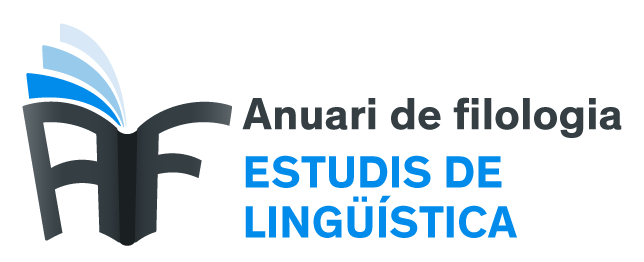FEATURES AND CLASSES OF THE EVENT STRUCTURE: TOWARDS A COMPUTATIONAL REPRESENTATION
DOI:
https://doi.org/10.1344/AFEL2011.1.1Keywords:
lingüística computacional, representación semántica, estructura eventiva, rasgos, clases, composicionalidad.Abstract
Research currently being conducted in the area of Natural Language Processing is still far from achieving deep levels of understanding of language. To build intelligent systems that deal with the representation of meaning, it is necessary in the field of language technologies, to create wide coverage semantic resources. The main goal of our research is the establishment of classes for representing events in a computational system. The basic unit of representation is thefeature; we have considered four specific features: dynamism, telicity, duration and gradual change. From the combination of these semantic features we have established a set of event classes that allows us to characterize verbal behavior. To establish these classes we took into account possible event changes that a verbal unit may suffer because of the context, thus representing the compositionality of event meaning. Therefore we have considered theprototypicity of verbal senses, and the sensitivity of the different classes to the context. The total 2 JUAN APARICIO, IRENE CASTELLÓN Y MARTA COLL-FLORITANU.FILOL.ESTUD.LINGÜÍST., 1/2011, pp. 1-29, ISSN: 2014-1408number of defined classes is classified into two groups, simple classes: states, processes andpoints, the combination of which gives rise to the complex classes: culminations, accomplishments and gradualsDownloads
Downloads
Published
2022-05-13
How to Cite
Aparicio Mera, J., Castellón Masalles, I., & Coll-Florit, M. (2022). FEATURES AND CLASSES OF THE EVENT STRUCTURE: TOWARDS A COMPUTATIONAL REPRESENTATION. Anuari De Filologia. Estudis De Lingüística, 1(1), 1–30. https://doi.org/10.1344/AFEL2011.1.1
Issue
Section
Articles
License
The authors who publish in this journal agree to the following terms:
- Authors retain copyright and grant the journal the right of first publication.
- Texts will be published under a Creative Commons: Reconeixement 4.0 Internacional license.






